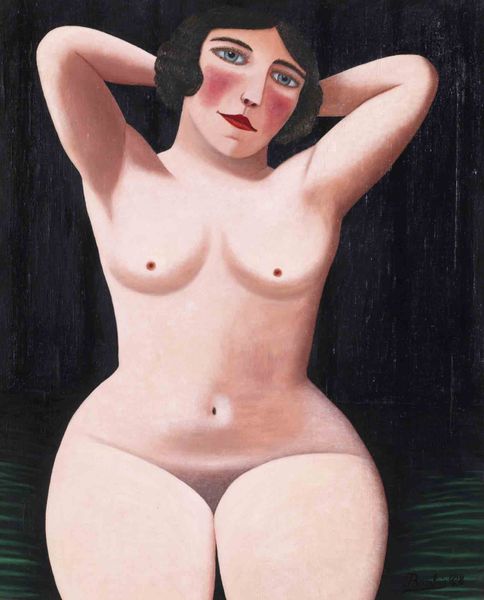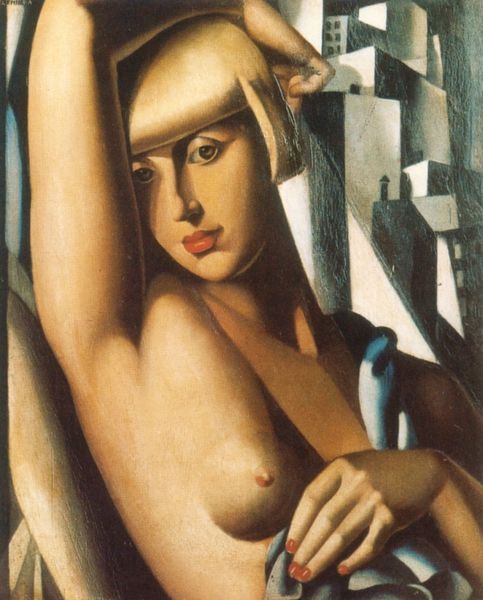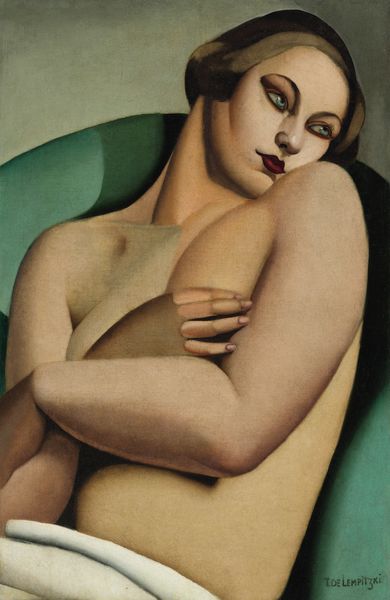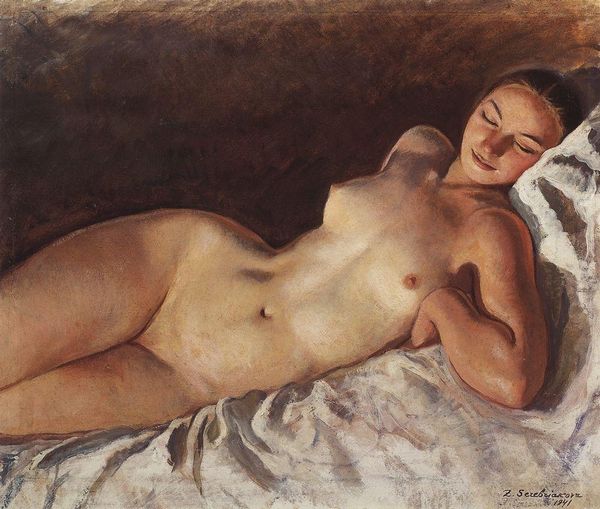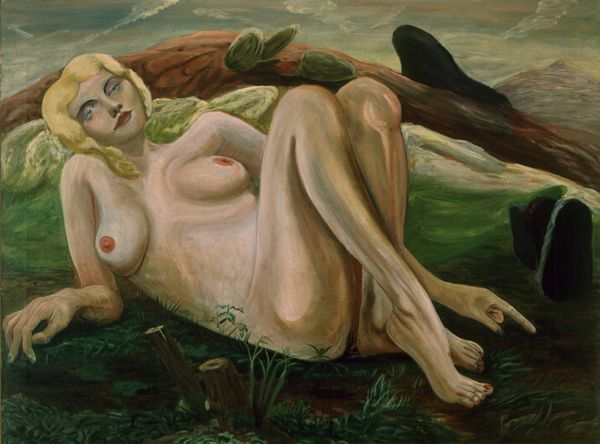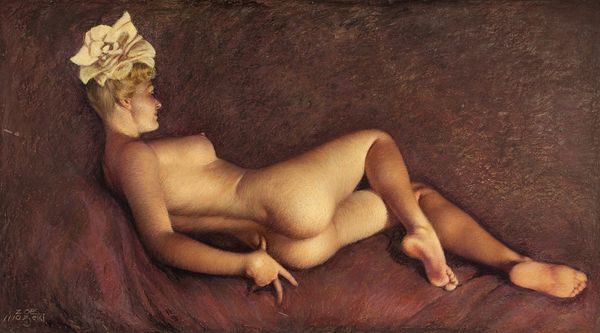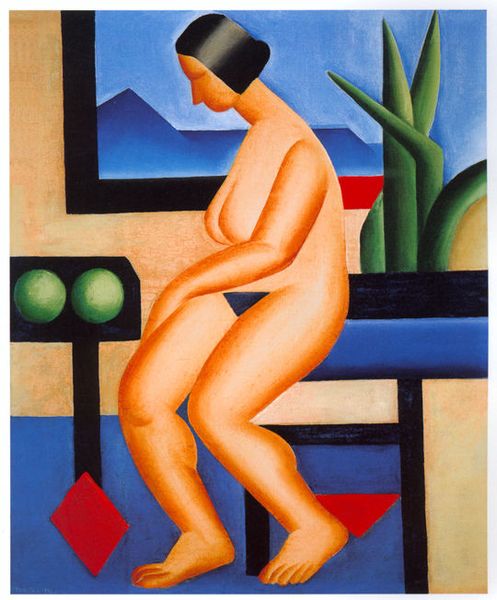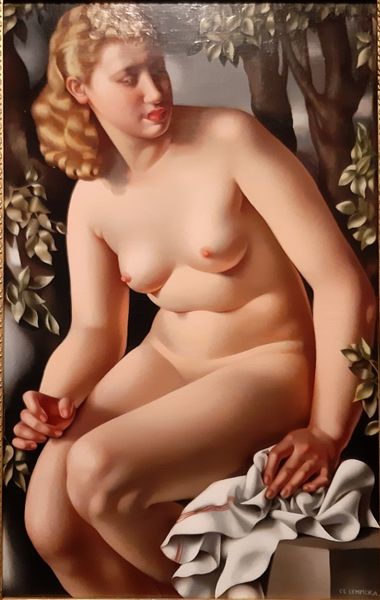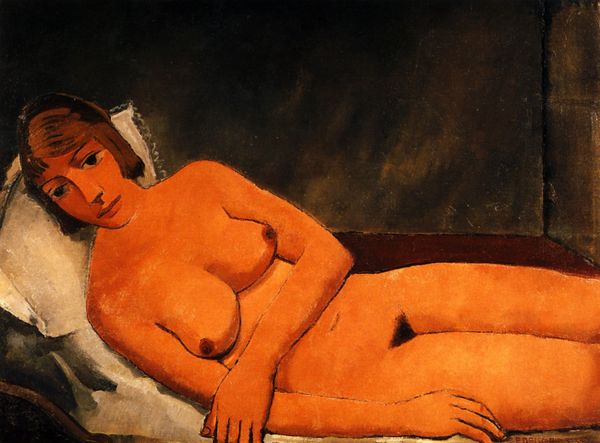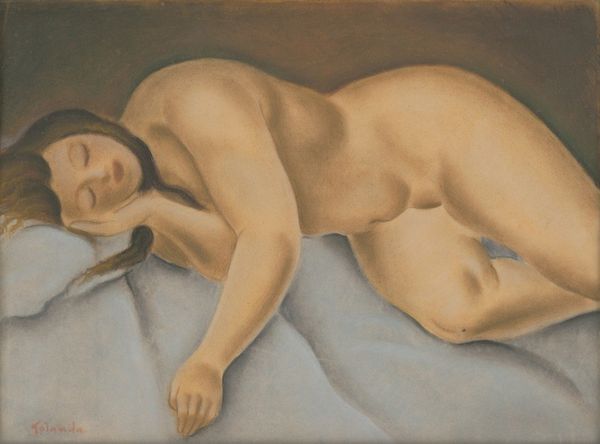
Copyright: Tamara de Lempicka Estate LLC
Curator: Here we have Tamara de Lempicka's "Nude on a Terrace" from 1925, rendered in oil paint. What’s your immediate impression? Editor: A feeling of opulent stillness. The starkness of the face, devoid of detailed features save for the bold lips, creates a sense of impassivity despite the relaxed pose. Curator: Observe how the artist employs clean lines and geometric shapes, a signature of the Art Deco style. Note, too, the almost metallic sheen of the skin, contributing to that sense of cool detachment. Editor: The figure's positioning—reclining but with a sharp angle in the arm—suggests a modern Venus, maybe, but definitely one asserting control. There's a deliberate defiance in the omission of her facial features. Is she a modern deity, indifferent to our gaze? Curator: Semiotically, the use of shadow is strategic. It accentuates form, definitely. But how does it affect our reading of her power? The harsh lighting almost sculptural. Editor: And the terrace—a dark, indeterminate space. Its presence is unsettling and juxtaposes the foreground with nature’s representation. A reference to the Garden of Eden, a primordial context. Or is the implication something more cynical about beauty? Curator: Cynical perhaps not. Lempicka subverts tradition by imposing an industrial polish, it’s more complex than any surface reading allows. It could be argued she is aestheticizing machine-age ideals into a sensuous package. Editor: Yet she also draws on established codes. I notice, the subtle detail of the bracelet—gold perhaps and symbolic of her status and autonomy. How can we divorce these signs? I mean, could this be self-portraiture? A deconstruction of female iconography by its reconstruction. Curator: An intriguing notion to posit. Lempicka, both subject and creator, dismantling expectations of the female form, or… constructing herself through it? It’s possible we are each right in parts. Editor: Either way, Lempicka presents more than just an aesthetic study; she invites commentary. I walk away from this artwork asking if it portrays true artistic freedom. Curator: Absolutely. And through formal language, we begin to unravel what that artistic statement looks like, how it feels. An intriguing insight into a work demanding a conversation.
Comments
No comments
Be the first to comment and join the conversation on the ultimate creative platform.
